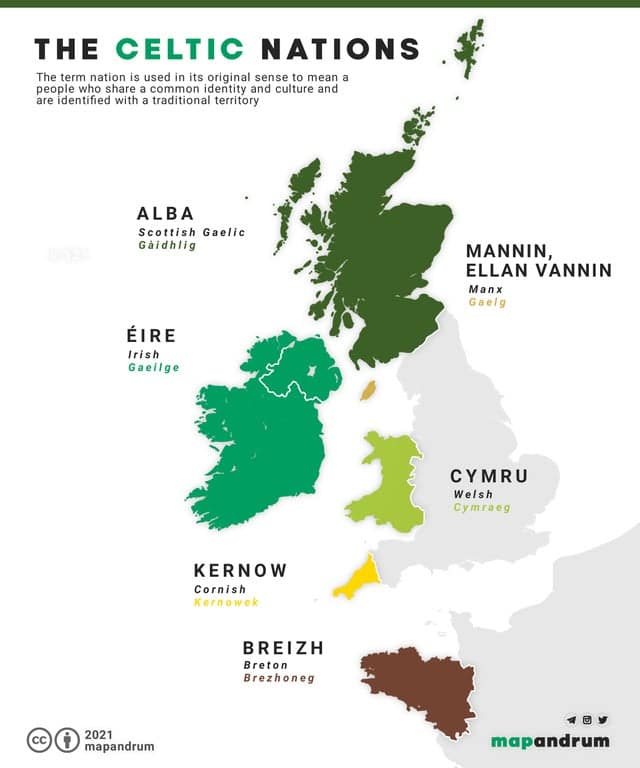Donegal Square is often referred to as “the Irish store”, which isn’t entirely incorrect, but it tends to define us too narrowly. In fact, we carry items made by artisans in Ireland, Scotland, and Wales. That is why our motto is “Bringing you all the Best from Ireland and the British Isles”.
Not Just St. Patrick’s Day
Just around the corner is “the Big One”, St. Patrick’s Day. A day when beer turns green and people eat corned beef and cabbage. Which is a wee bit ironic, because people in Ireland partake of none of that. In fact, until 20 or 30 years ago, St. Patrick’s Day was almost a non-event in Ireland. It was a day to go to mass, and certainly not a time for shenanigans. The St. Patrick’s Day celebrations you experience in Ireland now are primarily for the tourists who flock to the Emerald Isle for the holiday.
Before St. Patrick’s Day, however, there is another important holiday in the Celtic calendar. March 1 is St. David’s Day, the national holiday of Wales and the feast day of the patron saint of Wales. It is believed that St. David died on March 1 in the year 601.
With Wales and Ireland in the Celtic mix, we are led to the questions: What are the Celtic Nations? How Many Celtic Nations Are There?
The Six (or Seven) Celtic Nations
If asked to list the Celtic Nations, most people could identify Ireland, Wales and Scotland. But what of the other three (or more)? In this context, “nation” does not mean a separate country; rather, “nation” denotes a territory and a region with a distinct common culture and language.
The Celtic Nations occupy the western edge of Europe; in fact, they are often called the “Celtic Fringe”. It is these areas that largely remained outside the reach of Roman influence during the Roman Empire. In addition to Ireland, Wales, and Scotland, the other three Celtic nations are the Isle of Man, Cornwall (the southwest corner of England), and Brittany (the northwest region of France). Each of these nations has a strong Celtic identity and a distinct language that is spoken to this day.
There are six languages that fall under the umbrella of “Gaelic”. Irish, Scots Gaelic and Manx (the language of the Isle of Man) are closely related, as are Welsh, Breton (Brittany), and Cornish (Cornwall). Irish and Welsh are compulsory studies through the secondary school years in Ireland and Wales. Manx, Breton, and Cornish have faced extinction as everyday languages, but are now enjoying a revitalization.
It is often said that there are seven Celtic nations. The seventh is Galicia, in the northwest corner of Spain. Galicia has a strong Celtic identity, including stone circles and forts and the use of bagpipes in local music. Unlike the other six Celtic nations, however, no Celtic language has been spoken in Galicia since the middle ages.
Northern Portugal (perhaps the 8th Celtic nation) has cultural traits similar to Galicia, in the sense that there is a Celtic identity, but no Celtic language has continued into modern times.

The Celtic League
The Celtic League was founded in 1961 at a music festival in Wales. It is a pan-Celtic organization that aims to promote modern Celtic identity and culture in Ireland, Scotland, Wales, Brittany, Isle of Man, and Cornwall. The Celtic League places particular emphasis on promoting Celtic languages and cooperation between Celtic nations.
Because of the emphasis on language and the criteria that it must be a living language that is used on a daily basis, the Celtic League only recognizes six Celtic nations: Ireland, Scotland, Wales, Brittany, Isle of Man, and Cornwall.
